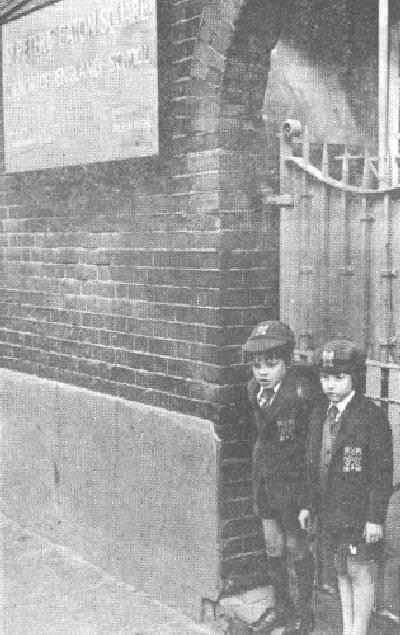
Figure 1.--The caption read, "Tiny English scholars rake traditional uniforms much for granted. Cost of the full kit isabout $50. Still they are worn almost all year long."


Figure 1.--The caption read, "Tiny English scholars rake traditional uniforms much for granted. Cost of the full kit isabout $50. Still they are worn almost all year long." |
An American journalist in 1975 commented on the English school uniform. Nancy Mills reports from London in an article entitled, "British uniforms are fit to be tied" that "For parents here , the back-to-school bell usually means a quick visit to the uniform shop. A bigger blazer, more white and gray shirts, maybe another jumper or a pair of shorts. ...." The article deals more with the subject of school uniform in general than specifically on 1970s styles. Although the article does not mention it, the text seems more geared to children attending private schools than state schools. She indicates that in 1975 that uniforms were becoming more colorful. I am not sure that she was right about that.
By Nancy Miles
London. For parents here, the back-to-school bell usually means a quick visit to the uniform shop. A bigger blazer, more white and gray shirts, maybe another jumper or a pair of shorts.
British kids put on their first tie at 5, when they start school, and they usually don't take one off till they go to college [HBC note: this American reference means university]
Wearing uniforms has been a British school tradition for as long as people can remember. The one big change today is color. Blue and gray used to be the only acceptable tones, but now schools must decide on green, brown, red, gold, or even purple.
Kids starting first grade [HBC note this is an American term, see the HBC class page] love the idea of a uniform and many of them don't want to take it off when they come home. They feel they "belong" to the school from the very first day, and this seems to wear off when they enter the fashion conscious teens. That's when uniforms become something to complain about.
Parents generally like a strict dress code because it keeps school wardrobe costs down, and solves the what-should-I-wear-this-morning problem. Clothes competitions among students is neatly avoided. Even hand-me-down uniforms have a certain cachet.
A typical school outfit includes a wool blazer (the biggest expense at avout $22), shirt, tie, cardigan or V-neck sweater, hat, scarf, and girls' jumper or skirt, and boys; shorts or trousers.
Schools are less strictabout winter coats, usually allowing whatever the student already owns. Shoes only need be in certain colors, so older children get a chance to have fashionable feet. This fall many are planning to stick withplatform shoes--still considered a status symbol among teenagers.
If kids had a choice, they might well revel against such boring dress. But since they don't, they concentrate their fashion preferences on after school and party clothes.
Jeans, brushed denims, bib-topped trousers, T-shirts, and American college sweat shirts are the most popular clothes to change into say boys and girls at St. Peter's Junior and Infant School in central London. Students range in age from 5 to 11. Many of them, with some motherly guidance, are also picking velour shirts and dresses and traditional plaid skirts.
Long cotton or cotton/wool blend dresses and patent leather shoes are the unanimous choice for even the youngest school girl going to a birthday party. Boys say they prefer long pants. The youngest ones often arrivd wearing patterened shirts and matching ties.
Simon, 14, says he enjoys wearing aU or V-neck vest over a tailored shirt if he isgoing out with some friends. At his age, anything moreway out is considered sissy--even in this land of fashion-loving with-its.
Daily News, October 7, 1975.
The article deals more with the subject of school uniform in general than specifically on 1970s styles. Although the article does not mention it, the text seems more geared to children attending private schools than state schools. She indicates that in 1975 that uniforms were becoming more colorful. I am not sure that she was right about that. We habe noted many earlier articles describing many more colorful caps and blazers. Perhaps the sweaters wre becoming more colorful. I'm not sure about girl's dresses and gym frocks. Boys shorts (grey) and trousers (grey and black) certainly did not change in color.
One reader comments, "From some of the wording, it appears that it was the beginning of short pants being replaced by longs, at least with older boys. Some schools even then let boys chose between "shorts or trousers." In the second to last paragraph, the article says, "boys say they prefer long pants." Many HBC images indicate that some schools held on to the short trousers requirement well into the 1990s."
Related Chronolgy Pages in the Boys' Historical Web Site
[Return to the Maon English 1970s school uniform page]
[Main Chronology Page]
[The 1880s]
[The 1930s]
[The 1940s]
[The 1950s]
[The 1960s]
[The 1970s]
[The 1980s]
Related Style Pages in the Boys' Historical Web Site
[Main English school uniform chronology page]
[Main English school uniform page]
[Long pants suits]
[Short pants suits]
[Socks]
[Eton suits]
[Jacket and trousers]
[Blazer
[School sandals]
Navigate the Boys' Historical Clothing Web Page
[Introduction]
[Activities]
[Biographies]
[Chronology]
[Clothing styles]
[Countries]
[Topics]
[Bibliographies]
[Contributions]
[FAQs]
[Glossaries]
[Satellite sites]
[Tools]
[Boys' Clothing Home]
